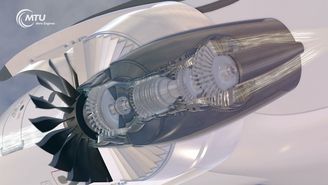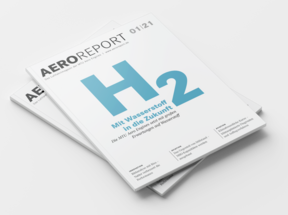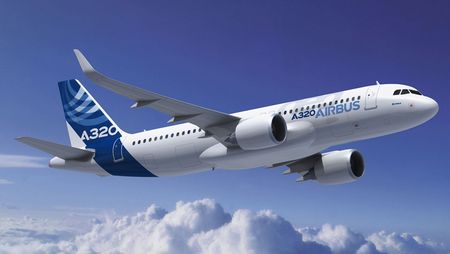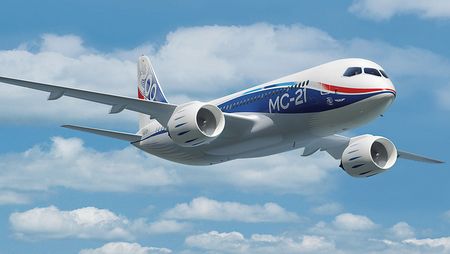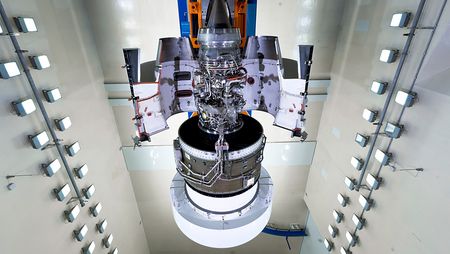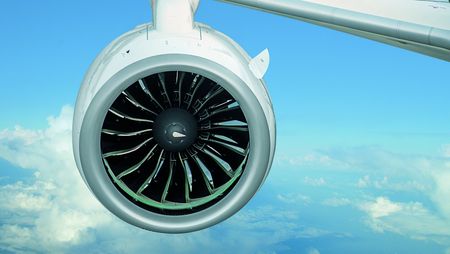
Pratt & Whitney GTF™ engine
GTF engine: Powering the Airbus A320neo, Airbus A220, and the Embraer E-Jets
The Pratt & Whitney GTF™ engine family powers next-generation commercial aircraft. The new engines offer double-digit percentage reductions in fuel consumption, pollution, noise emissions, and operating costs. The reduction gearbox located between the fan and low-pressure compressor—on which the low-pressure turbine that drives the fan is mounted—allows the fan to rotate more slowly. At the same time, the low-pressure compressor and turbine can run faster. This helps achieve lower fan pressure ratios, and thus higher bypass ratios, and lets all components achieve their optimum performance. Consequently, the geared turbofan has very high overall efficiency, substantially reducing fuel consumption and CO2 emissions and significantly decreasing noise footprint. Compared to the previous engine generation, the GTF engine family represents a reduction in CO2 emissions of 20 percent with a noise footprint that is 75 percent smaller. A further advantage is that its fewer compressor and turbine stages make for a lighter engine.
The GTF engine family can be found in a variety of aircraft types: Airbus offers the GTF engine family for its A320neo and A220, while Embraer has made it the only option for its second-generation E-Jets.
MTU’s involvement in the GTF engine family
MTU’s share in the GTF engine family is as much as 18 percent, depending on the application. In addition to being responsible for the high-speed low-pressure turbine and the first four stages of the high-pressure compressor, MTU also manufactures brush seals and nickel blisks for high-pressure compressor components that fall outside its design responsibility. Moreover, MTU in Munich is responsible for the final assembly of one-third of the production PW1100G-JM for the A320neo.
To date, the GTF engine family has saved nearly 5 billion liters of fuel and avoided 14 million metric tons of CO2 emissions. Pratt & Whitney will launch the GTF Advantage™ engine configuration, unveiling a technologically improved geared turbofan engine for the A320neo family.
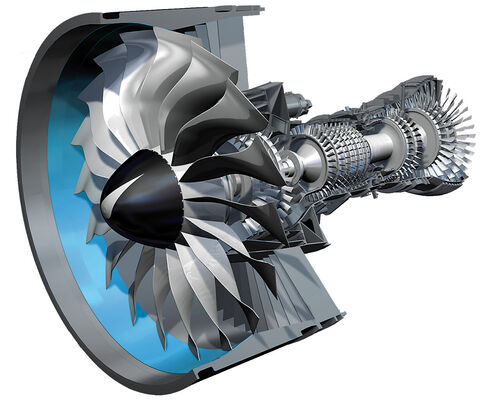
Technical Data
| PW1500G | PW1100G-JM | PW1900G | |
|---|---|---|---|
| Thrust (lbs) | 19-25 k | 24,4-33 k | 19-23 k |
| Bypass ratio | 12.5:1 | 12.5:1 | 12.5:1 |
| Fan diameter | 6.1 ft | 6.7 ft | 6.1 ft |
Facts
- EIS: 2016
- The GTF is a two-shaft turbofan engine in thrust category 14,000-33,000 lbf (capable of increase)
- 20% CO2 savings possible per trip with GTF-powered aircraft
- up to 50% reduction in NOx emissions
- up to 75% reduction in noise footprint
Partners
- Pratt & Whitney
- Japanese Aero Engines Corporation (JAEC)
Applications
- PW1100G-JM: Airbus A320neo
- PW1500G: Airbus A220
- PW1900G: Embraer E-Jets Gen2
MTU competencies
- Program share PW1500G: 17%
- Program share PW1100G-JM: 18%
- Program share PW1900G: 17%
- Development and manufacture of various stages of the high-pressure compressor, of the high-speed low-pressure turbine and brush seals in all applications
- 1/3 of the final assembly of the PW1100G-JM series engines takes place at MTU Aero Engines in Munich
PW1100G-JM
- Maintenance at MTU Maintenance Hannover, MTU Maintenance Zhuhai, EME Aero and MTU in Munich
- Start year MRO: 2016
- Workscope: Engine MRO
PW1500G
- Maintenance at EME Aero
- Start year MRO: 2021
- Workscope: Engine MRO
PW1900G
- Maintenance at EME Aero
- Start year MRO: 2023
- Workscope: Engine MRO

